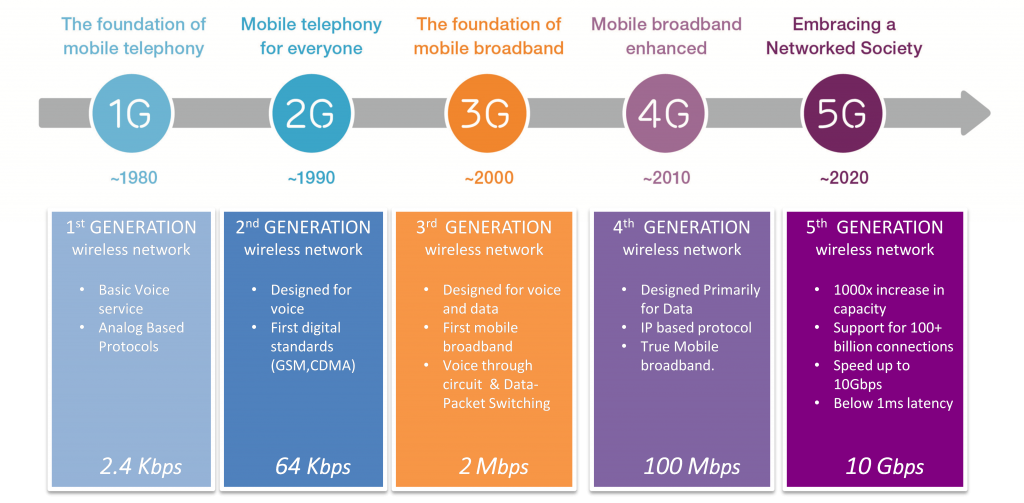The continuously growing need for higher data rates and, therefore, more signal bandwidth in wireless communications, drives new applications into the microwave and millimeter-wave frequency domain[1]. Fig. 1 shows the roadmap towards 5th generation (5G) wireless communication systems[2]. To achieve the data-rate objectives, future 5G will employ a network of novel multi-antenna massive MIMO[3] (Multiple-Input-Multiple-Output) systems and will use more bandwidth at high frequencies (e.g. at 30 GHz, Ka-band). This innovative implementation calls for large-scale array antenna systems with hundreds or thousands of active antenna elements that operate fully coherently and adaptively. The use of a large number of antenna elements helps to focus the transmission and reception of signal energy into ever-smaller regions of space. This brings huge improvements in throughput and energy efficiency, particularly when combined with simultaneous scheduling of a large number of user terminals (e.g., tens or hundreds); these features constitute the envisioned massive MIMO capabilities. The fact that RF power generation is distributed over a large number of active antenna elements allows us to use highly-integrated and cost-effective silicon (Bi-)CMOS technologies[4]. Traditional dense multi-beam phased-array antenna systems, which are used in high-end defence systems, have major limitations when used in the domain of wireless infrastructure, due to the multi-user scenario and non-line-of-sight effects in wireless propagation channels. In addition, these antenna systems cannot comply with practical implementation requirements such as low power dissipation, low cost and small size. Therefore, we need to train future European researchers to develop low-power, low-cost silicon-based massive MIMO solutions for these emerging wireless infrastructure applications and equip them with a comprehensive set of transferable skills relevant for innovation and long-term employability. SILIKA will extend the traditional academic research training setting and bring the doctoral training to a next level. A multi-disciplinary and cross-sectoral approach is required, combining the expertise in the area of antennas, high-frequency electronics, signal processing and high-volume manufacturing.

Time line towards 5G wireless communication.
[1] Steven Cherry, “Edholm’s Law of Bandwidth”, IEEE Spectrum July 2004, p58-59
[2] http://www.ericsson.com/res/docs/whitepapers/wp-5g.pdf
[3] Rusek, Fredrik, et.al.. “Scaling up MIMO: Opportunities and challenges with very large arrays.” Signal Processing Magazine, IEEE (2013
[4] ITRS Roadmap, www.itrs.net
